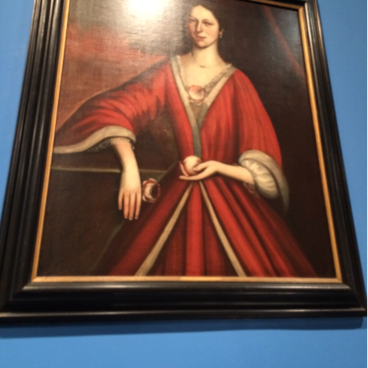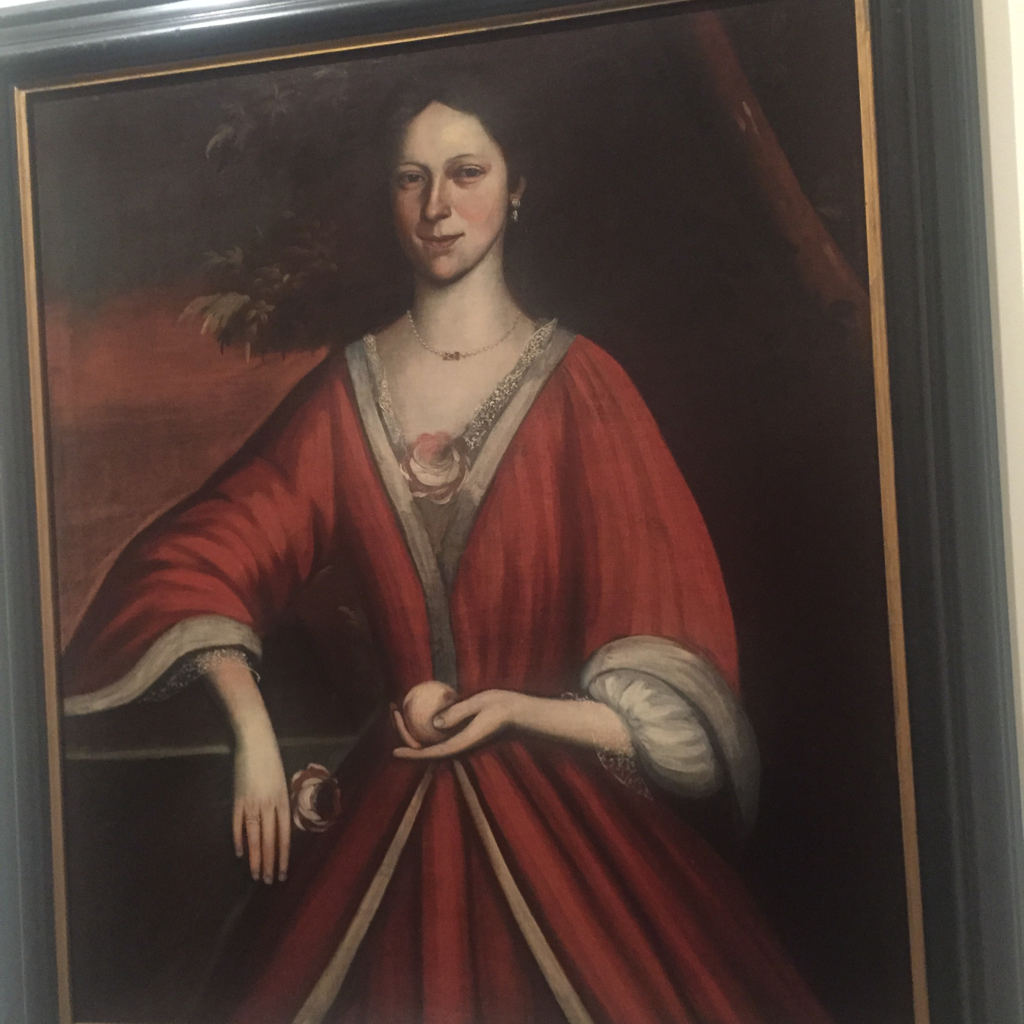
Wyntje (Lavinia) Van Vechten
Attributed to Nehemiah Partridge
American Art
Portraits of Pan-American Privilege
These women’s ancestors were among the first European colonizers of the Americas. Some of those colonists crossed the Atlantic to serve the global ambitions of the various crowns of Europe, and others came as economic and religious refugees from Spain, England, and the Dutch Republic. By the eighteenth century, fabulous fortunes had been amassed throughout the region, reflected here in the European-inspired dress and jewelry worn by three privileged Americans.
Miguel Cabrera, eighteenth-century Mexico’s premier painter, portrayed Doña María de la Luz wearing imported silk brocade and five chiqueadores, or glued false beauty spots. Boston’s leading portraitist, John Singleton Copley, painted the monarchist Abigail Pickman Gardiner sporting an uncorseted dress—probably the artist’s invention, since the style was considered inappropriate in New England society but was the height of London fashion. The Hudson Valley portraitist Nehemiah Partridge captured Wyntje Van Vechten’s likeness with more restraint, emphasizing her simple hairstyle, minimal jewelry, and modest dress.
These women’s ancestors were among the first European colonizers of the Americas. Some of those colonists crossed the Atlantic to serve the global ambitions of the various crowns of Europe, and others came as economic and religious refugees from Spain, England, and the Dutch Republic. By the eighteenth century, fabulous fortunes had been amassed throughout the region, reflected here in the European-inspired dress and jewelry worn by three privileged Americans.
Miguel Cabrera, eighteenth-century Mexico’s premier painter, portrayed Doña María de la Luz wearing imported silk brocade and five chiqueadores, or glued false beauty spots. Boston’s leading portraitist, John Singleton Copley, painted the monarchist Abigail Pickman Gardiner sporting an uncorseted dress—probably the artist’s invention, since the style was considered inappropriate in New England society but was the height of London fashion. The Hudson Valley portraitist Nehemiah Partridge captured Wyntje Van Vechten’s likeness with more restraint, emphasizing her simple hairstyle, minimal jewelry, and modest dress.
MEDIUM
Oil on linen
DATES
1720
DIMENSIONS
40 3/16 x 34 9/16 in. (102 x 87.8 cm)
frame: 49 3/16 x 43 9/16 x 2 1/4 in. (124.9 x 110.6 x 5.7 cm) (show scale)



INSCRIPTIONS
Inscribed lower right: "Etas. Su[e] / 18- / 172[0]"
COLLECTIONS
American Art
ACCESSION NUMBER
43.36
CREDIT LINE
Dick S. Ramsay Fund
EXHIBITIONS
MUSEUM LOCATION
This item is not on view
CAPTION
Attributed to Nehemiah Partridge (American, 1683–before 1737). Wyntje (Lavinia) Van Vechten, 1720. Oil on linen, 40 3/16 x 34 9/16 in. (102 x 87.8 cm). Brooklyn Museum, Dick S. Ramsay Fund, 43.36 (Photo: Brooklyn Museum, 43.36_SL1.jpg)
IMAGE
overall, 43.36_SL1.jpg. Brooklyn Museum photograph
"CUR" at the beginning of an image file name means that the image was created by a curatorial staff member. These study images may be digital point-and-shoot photographs, when we don\'t yet have high-quality studio photography, or they may be scans of older negatives, slides, or photographic prints, providing historical documentation of the object.
RIGHTS STATEMENT
No known copyright restrictions
This work may be in the public domain in the United States. Works created by United States and non-United States nationals published prior to 1923 are in the public domain, subject to the terms of any applicable treaty or agreement.
You may download and use Brooklyn Museum images of this work. Please include caption information from this page and credit the Brooklyn Museum. If you need a high resolution file, please fill out our online application form (charges apply).
The Museum does not warrant that the use of this work will not infringe on the rights of third parties, such as artists or artists' heirs holding the rights to the work. It is your responsibility to determine and satisfy copyright or other use restrictions before copying, transmitting, or making other use of protected items beyond that allowed by "fair use," as such term is understood under the United States Copyright Act.
The Brooklyn Museum makes no representations or warranties with respect to the application or terms of any international agreement governing copyright protection in the United States for works created by foreign nationals.
For further information about copyright, we recommend resources at the United States Library of Congress, Cornell University, Copyright and Cultural Institutions: Guidelines for U.S. Libraries, Archives, and Museums, and Copyright Watch.
For more information about the Museum's rights project, including how rights types are assigned, please see our blog posts on copyright.
If you have any information regarding this work and rights to it, please contact copyright@brooklynmuseum.org.
RECORD COMPLETENESS
Not every record you will find here is complete. More information is available for some works than for others, and some entries have been updated more recently. Records are frequently reviewed and revised, and we welcome any additional information you might have.









































